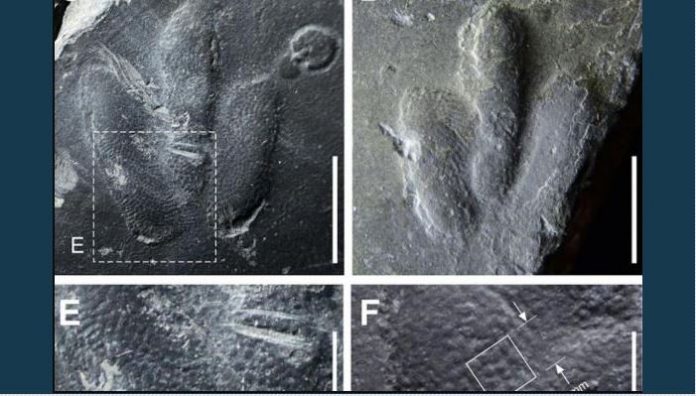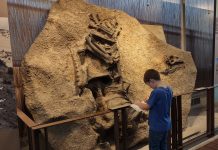
April 9 (UPI) — Paleontologists have discovered a set of dinosaur footprints with preserved skin patterns inside each.
“These are the first tracks ever found where perfect skin impressions cover the entire surface of every track,” Martin Lockley, a professor of geology at the University of Colorado, Denver, said in a news release.
The tracks and skin traces were left by Minisauripus, one of the smallest known theropods. The rare footprints were so small that they were almost destroyed during the early stages of a large scale excavation near Jinju, South Korea, but researchers spotted the delicate tracks just in time.
“The tracks were made on a very thin layer of fine mud, rather like a coat of fresh paint only a millimeter thick,” Lockley said.
Analysis of the mud layers revealed the impressions of rain drops. Rain fell just before the tiny raptor scampered across the mud. The footprints and skin impressions were quickly covered by another layer of mud, preserving the tracks for more than 120 million years.
Scientists likened the texture of the raptor’s skin to medium sandpaper. The skin traces also revealed the pattern of the therepod’s tiny scales — a pattern similar to the partial skin traces found in the prints of larger, carnivorous theropod dinosaurs.
The latest findings, published this week in the journal Scientific Reports, suggest South Korea was overrun with miniature raptors during the Cretaceous period.
Last year, researchers reported the discovery of prints representing the smallest dinosaur yet discovered inside a dried lake bed in South Korea.





